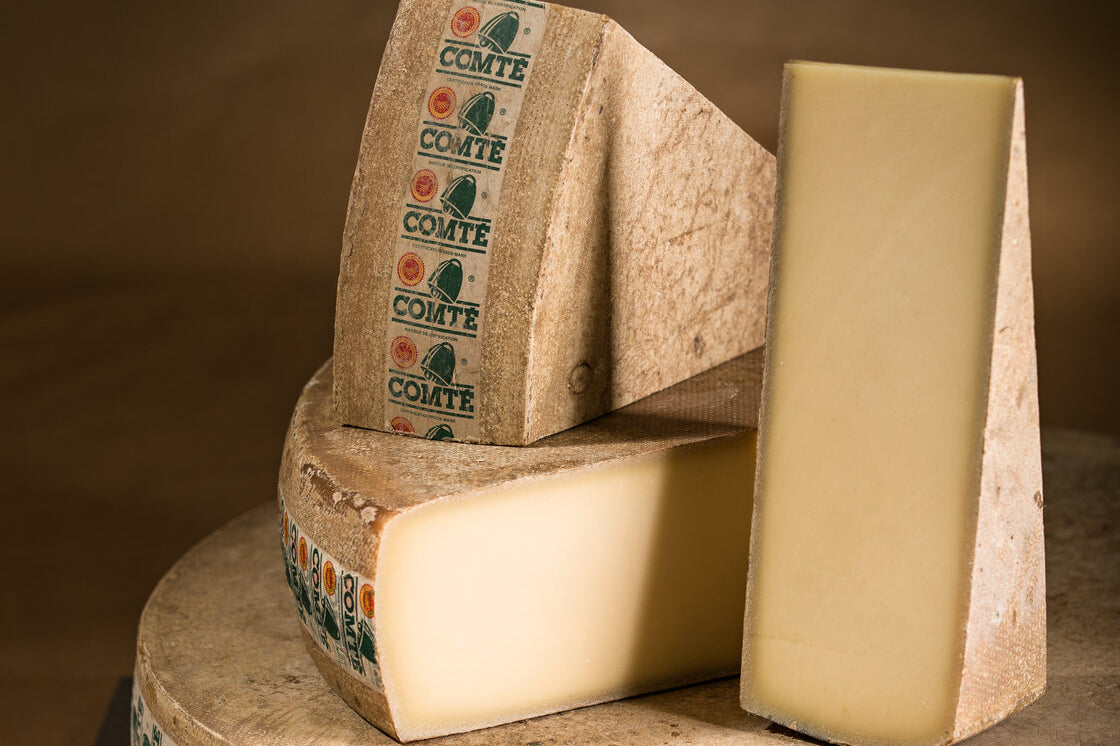
Winter is far from my favorite season, but I only need to think cheese, and more particularly melted cheese, and I instantly feel better about the cold temperatures we are facing for the next few months.
Seasonality has a big role to play in the way we consume food in general and cheese more specifically.
In winter, animals will spend more time inside like we do. They will be fed more grains and silage. Which in turns is going to alter the various qualities of the milk.
Now go back hundreds of years when winter in mountainous areas such as the Alps meant like farmers had to act like ants would and put aside food for times where it would not be possible to get any.
That’s how the first cooperatives were created, and every dairy farmer was encouraged to bring milk and consolidate amounts to create bigger cheeses. Cheeses that they would in turn use to sustain their life under very harsh and cold circumstances.
Winter cheeses are therefore very often big and hard.
Think Gruyere, Comté, Raclette, Beaufort or Emmental.
All these beautiful cheeses are fabulous winter warmers when you start melting them.
They are also great with red wines such as Grenache, Pinot Noir or Shiraz.
And who doesn’t like the idea of having a melted cheese on a baked potato with cornichons and a perfect glass of fruity yet earthy Pinot Noir?
These cheeses would also be fabulous in any of your toasties or shredded in your pasta dishes or risottos.
A few more Winter Cheeses come to mind of course:
Epoisses, a fabulous washed-rind from Burgundy, washed with Burgundy Brandy. This complex cheese oozes with a sexy texture and sometimes offensive aroma but always delicious flavours.
This time, picture yourself near the open fireplace with a fresh baguette and a tasty glass of Barossa Shiraz (or Pinot if your Epoisses is still young).
So all in all, let’s welcome Winter and succumb to the attractive Winter cheeses that are available to us!
Life is good!

Comments (0)
Back to What's Happening in our World of Cheese